CLIMATE DESPAIR (PART ONE)
Northern Cape drought takes its toll on young people’s mental health
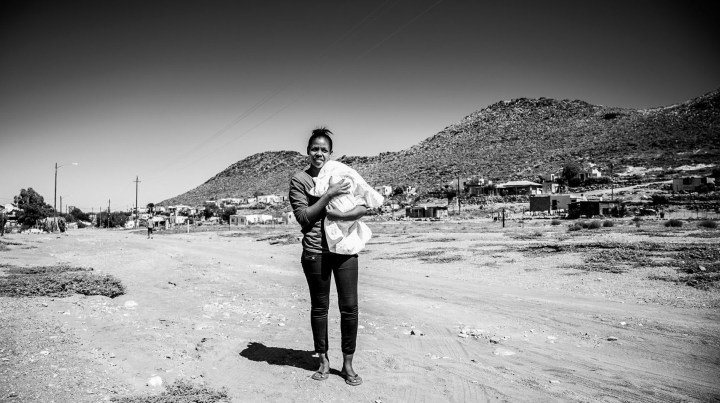
‘Great frustration and dashed dreams’. Young people — and especially girls and young women — living in marginalised communities are extremely vulnerable to the effects of the unfolding climate crisis on their mental health and wellbeing and on their future prospects. In a series of three articles, we explore this topic.
The story of drought in Williston in the Northern Cape, it turns out, is also the story of a prized picture displayed on a fridge door in a tiny house on the outskirts of this town.
This picture of a smiling netball team has been bleached by the sun. You can’t really distinguish all the team members. Nevertheless, the image is kept as a reminder — something deferred, a wish maybe.
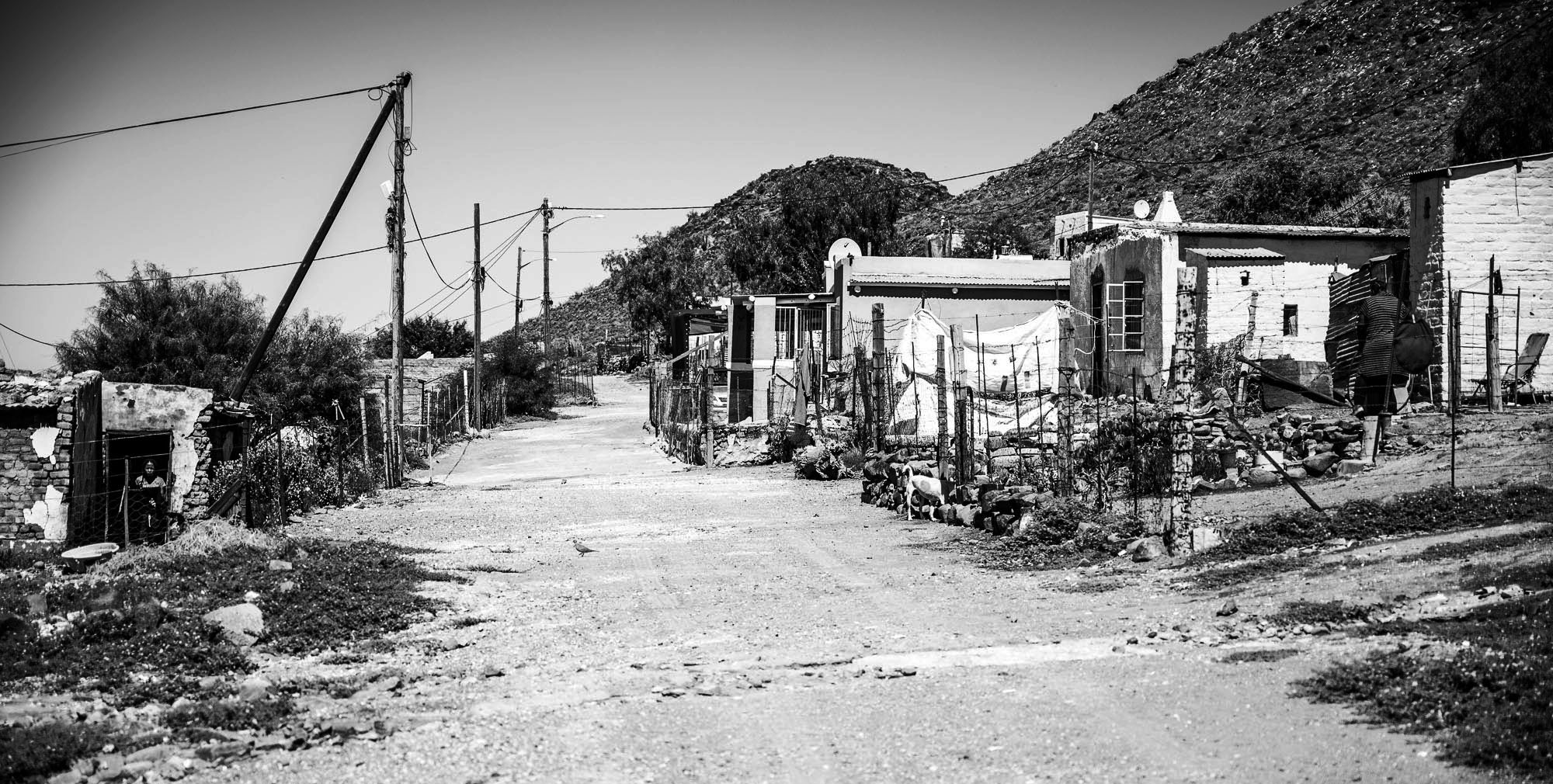
The recent drought has permeated almost every aspect of life in Williston and other Karoo towns. The effects of this on people’s wellbeing, livelihoods, and future prospects are part and parcel of the long burden of drought. (Photo: Newton Stanford)
Drought is a complex and creeping phenomenon. It is also a trigger event that deepens underlying social vulnerabilities within communities.
Its effects permeate towns and households in many, often unforeseen, ways.
Now, almost a decade into a severe drought, many people in the region exist in survival mode, eking out an existence in the precarious, harsh context of our unfolding climate reality.
It has been eight years of hardship and uncertainty for the community of Williston, including the parents of Marcia Wilsket (18), the slight but agile goal-attack player in the photo.
In October 2021, half of the farms in the Pixley Ka Seme District Municipality in which Williston is located were still severely affected by the drought that persists in parts of the Northern Cape.
The grinning Marcia Wilsket in the photo, in reality, has a somewhat weary smile when she meets us. She wears practical leggings and a red T-shirt. The only thing between her and the scorching hot tar road is a pair of worn-in plastic sandals. She is on her way home from the town centre.
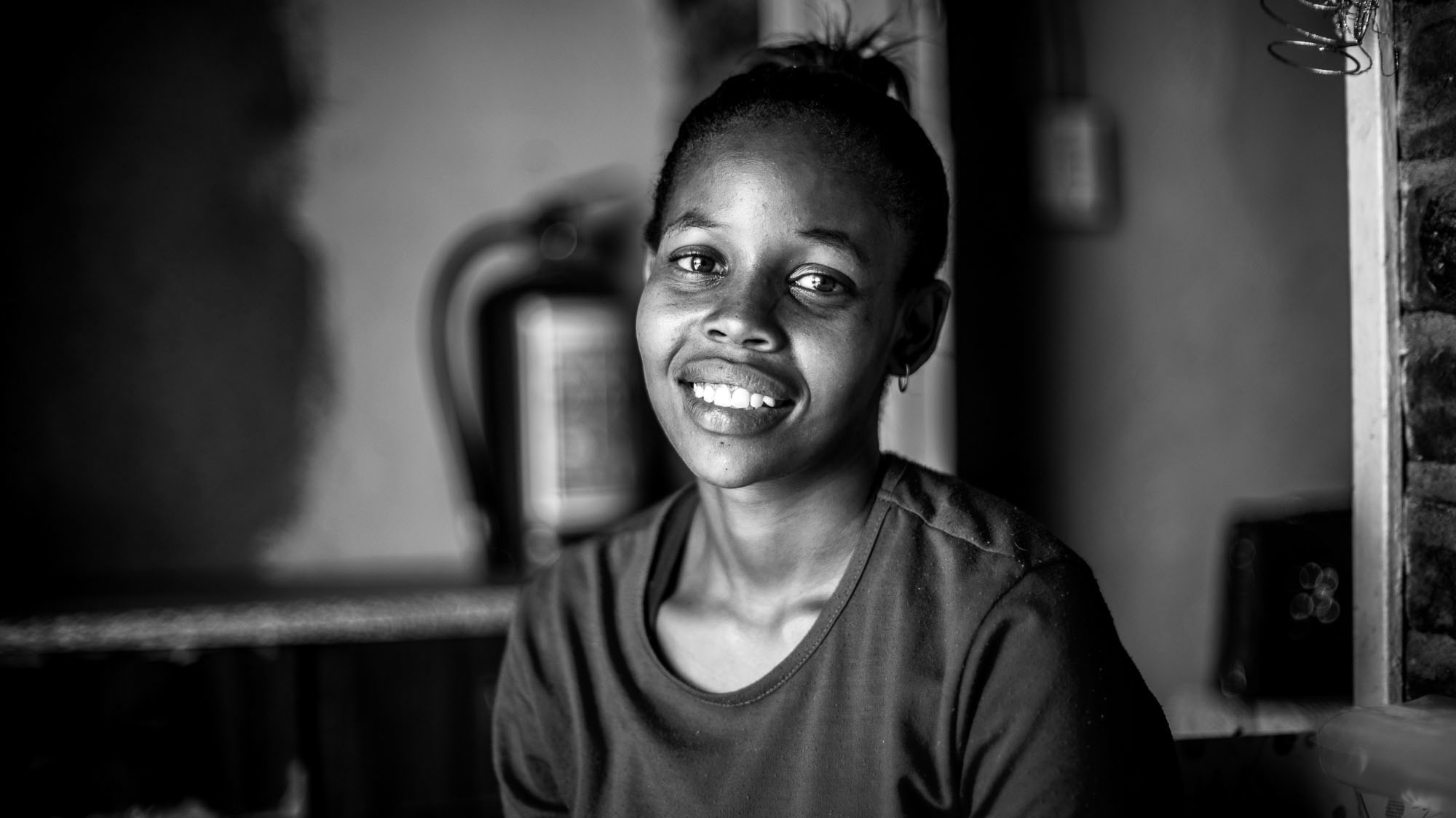
Marcia Wilsket is a slight, but agile goal-attack player who qualified for the provincial under-16 netball team before becoming pregnant. She hopes to get back to playing this year. (Photo: Newton Stanford)
A flock of lesser kestrels perching in the shade of a nearby tree forms a sudden flashmob when we pass, disturbing their quiet wake.
The sun is unforgiving at midday as Wilsket passes a group of men in faded overalls and shoes that lost their shine a long time ago. The liquor store where they stand flocked together is one of three in the small town of Williston.
Drought affects everything in this part of the world with its gnarled dwarf shrubs, tufts of perennial grasses and seasonal rivers with dry beds. With the recent rains, it was as if the heavy summer showers initially couldn’t get a grip on the arid earth, flash-flooding the landscape. Swollen rivers and rushing streams have since filled parched arteries and replenished surface moisture, rejuvenating the veld and finally giving farmers something to celebrate under this unwavering sun. Unfortunately, the underground water levels (water tables) have not yet been replenished. This will take many years, probably decades, to happen.
“Sometimes, I feel a bit overwhelmed,” says Wilsket. She avoids making eye contact, inhales to sigh and says, “I also miss living on the farm.” She now lives in Amandelboom, a part of town that the urban planners of apartheid-era South Africa designated a “coloured” area.

Plastic containers are stacked next to a tap outside Marcia Wilsket and her family’s rented two-room house. The inside of the house is overcrowded and offers limited storage space. (Photo: Newton Stanford)
Wilsket’s father earns his living intermittently as a farmworker and during the drought lost his job — he worked on four farms and also did casual work whenever the opportunity presented itself.
The town’s primary economic lifeline — sheep farming — has taken a significant knock because of the prolonged drought. Although local farmers continue to show remarkable resilience under the enduring tough conditions, the burden of this extreme event has become too much for many people on the farms.
Uprooted
Already caught in a wide-ranging climate of scarcity, Wilsket’s life was further changed when she became pregnant during the Covid-19 pandemic.
Baby Me-Jade was born in October last year. “Being pregnant during the pandemic meant I couldn’t go to school. So I stayed at home, often only interacting with other kids when writing exams.” Apart from her peers, what she missed most were school activities, like netball, which she enjoys so much.
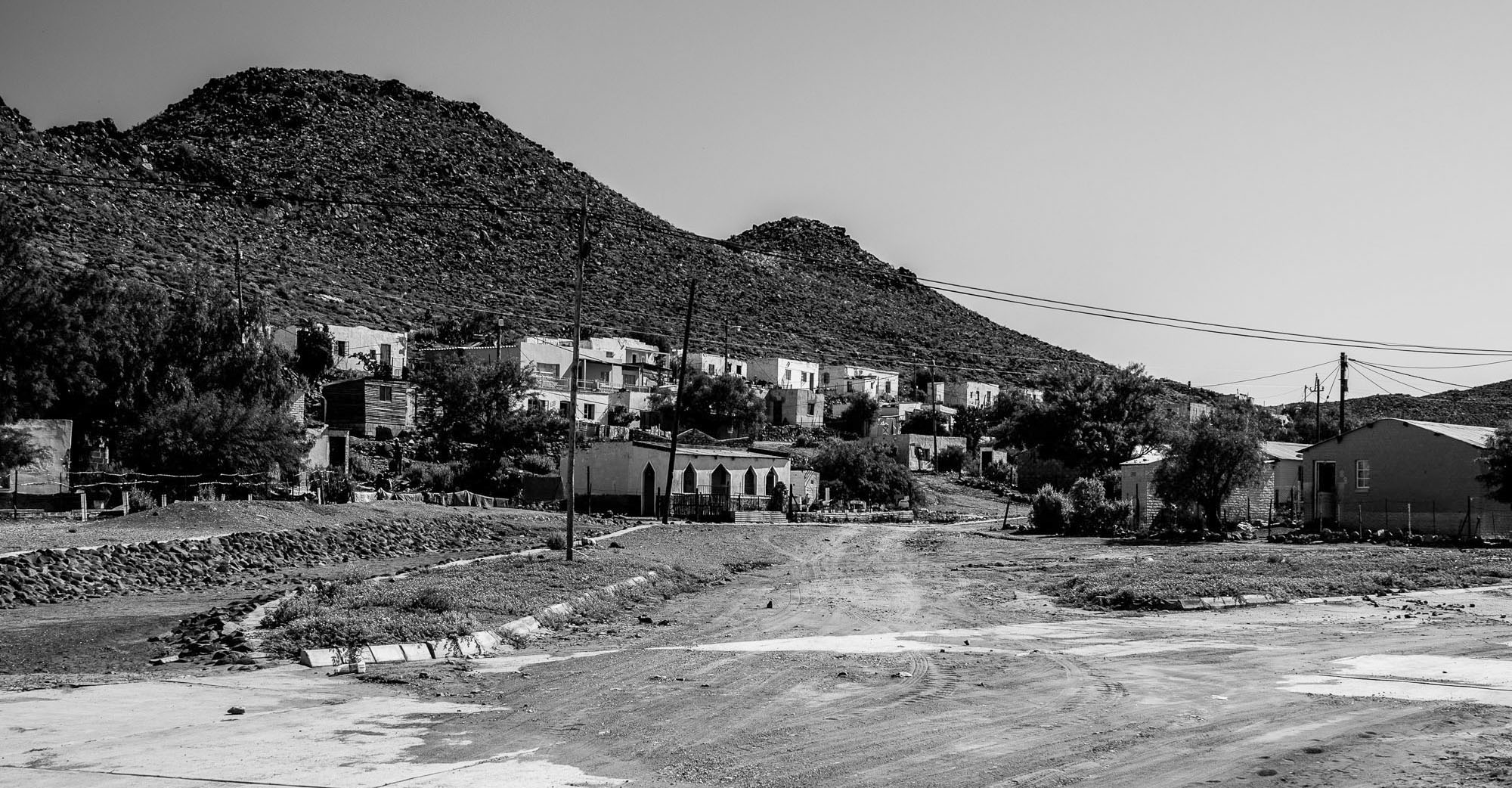
Houses on the outskirts of Williston in the Upper-Karoo. The drought has uprooted many: People have drifted into town, families ending up in cramped living quarters like here in Amandelboom. (Photo: Newton Stanford)
“I felt alone and ashamed. My mom was my only friend for most of the year. I did not really have anyone else to talk to.”
The tar road passes by an overgrown cemetery with plastic bouquets and weathered gravestones. The road eventually gives and becomes a single dirt track.
A slightly sour sewage-like smell lingers in the air. The heat makes it all the more pungent.
We pass a cluster of houses that appear huddled together in the massive Karoo landscape, and later makeshift dwellings interspersed with patches of gardening. Some of the places seem abandoned but people live there, nonetheless.
We reach the edge of town. “This is us here,” Wilsket says in front of a brick house. She shows us around. Bobby, Lady and Benno are happy to see her, tails wagging. Some small children appear and ask her for bread.
Wilsket lives with her mother (40), brother (15), sister (12) and two foster children (one is seven, the other 10 years old) in this rented two-bedroom house. Her father (45) and older brother (23) aren’t in; they are working on a farm again. They visit when possible.
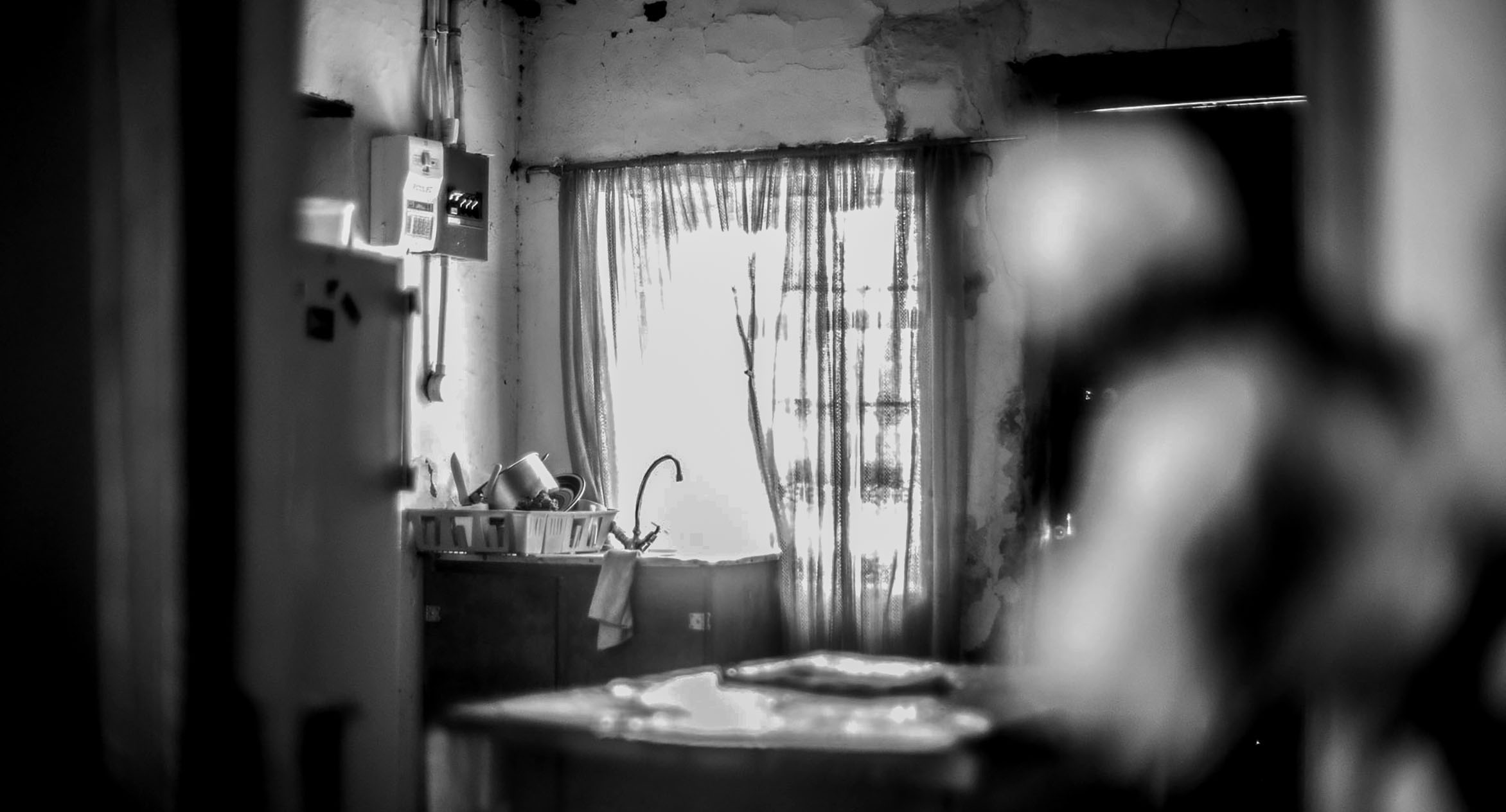
Valued household objects and quiet domestic scenes often tell their own story.(Photo: Newton Stanford)
The family’s hardships, disruptions and ensuing uncertainties make Wilsket uneasy and anxious. “I don’t know if I will have time to just be a kid again,” she says. Her nails are chipped, with some remnants of purple nail polish.
Surrounding the house with its two safety gates is security fencing with a roll of barbed wire on top of it. The garden consists of a few scattered plants. A small tree provides shade for playing children. They have kept the drought from encroaching on the garden by using greywater. The house is neat as a pin.
A sheer curtain serves as a divider between the kitchen and living area, and Wilsket’s bedroom that she shares with her siblings. Her mother and the youngest sleep in the only room with a window. Adjacent to this room is the quietest place in the house, Wilsket tells us. “This is where I normally do my homework,” she says. There is just enough space for a small table, two kitchen chairs and a threadbare couch.
Having to move around a lot during the drought and then going to town marked the start of an uncertain time for her, Wilsket recalls. She and her brother Quinton stayed at the local school’s hostel for a while, an arrangement that brought them some stability. But it also meant that the members of the family were separated, often for long stretches. Wilsket remembers feeling “very alone” and anxious at the time, missing her parents.
“I was 14 years old when we moved here. Living in the hostel was very different from living on the farm. I took care of my brother, and he took care of me. At night, I sometimes wandered around in the corridors, not really having anyone to talk to. I felt safe but also kind of lonely.”
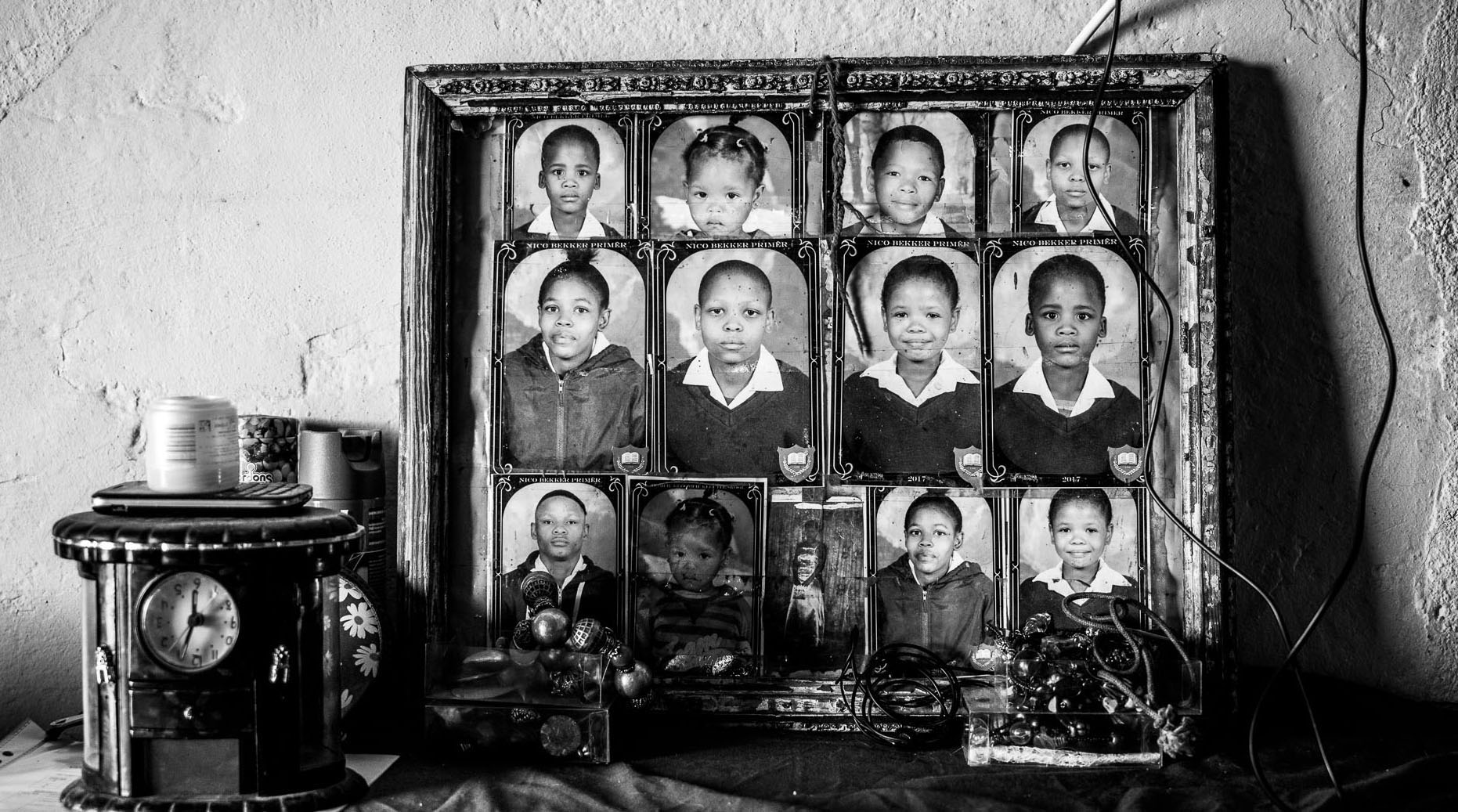
Precious family photos in picture frames are displayed in the house. Here we see two pictures of a much younger Marcia Wilskit (middle, left and bottom, second from the right). (Photo: Newton Stanford)
Her mother moved to town to be with them. She found a job as a domestic worker and later started helping out at a local school’s feeding programme.
Balancing their household food requirements with other needs could be challenging, all the more so during lockdown. Wilsket concedes: “Things got a little difficult at times. But I know we are still more fortunate than many other people.” This is despite the household relying heavily on social grants to supplement her parents’ intermittent income.
A community laid bare
Willem Symington recalls the drought, at its worst, having many people hanging by their fingernails. He farms on Leeukrantz, about 20km from Williston.
“Last year was the last straw for many people. Karoo farmers are known for their grit and perseverance, but this drought has stretched many of us beyond our resilience.”
Many farmers have simply given up hope, he says. “They’ve sold their stock, locked their houses and farm gates, and moved elsewhere.”
The drought will affect the sustainability of many farms for years to come, Symington says. In addition to farming, he also heads Agri SA’s Natural Resources Centre of Excellence and has been closely involved with drought disaster relief response across the province.
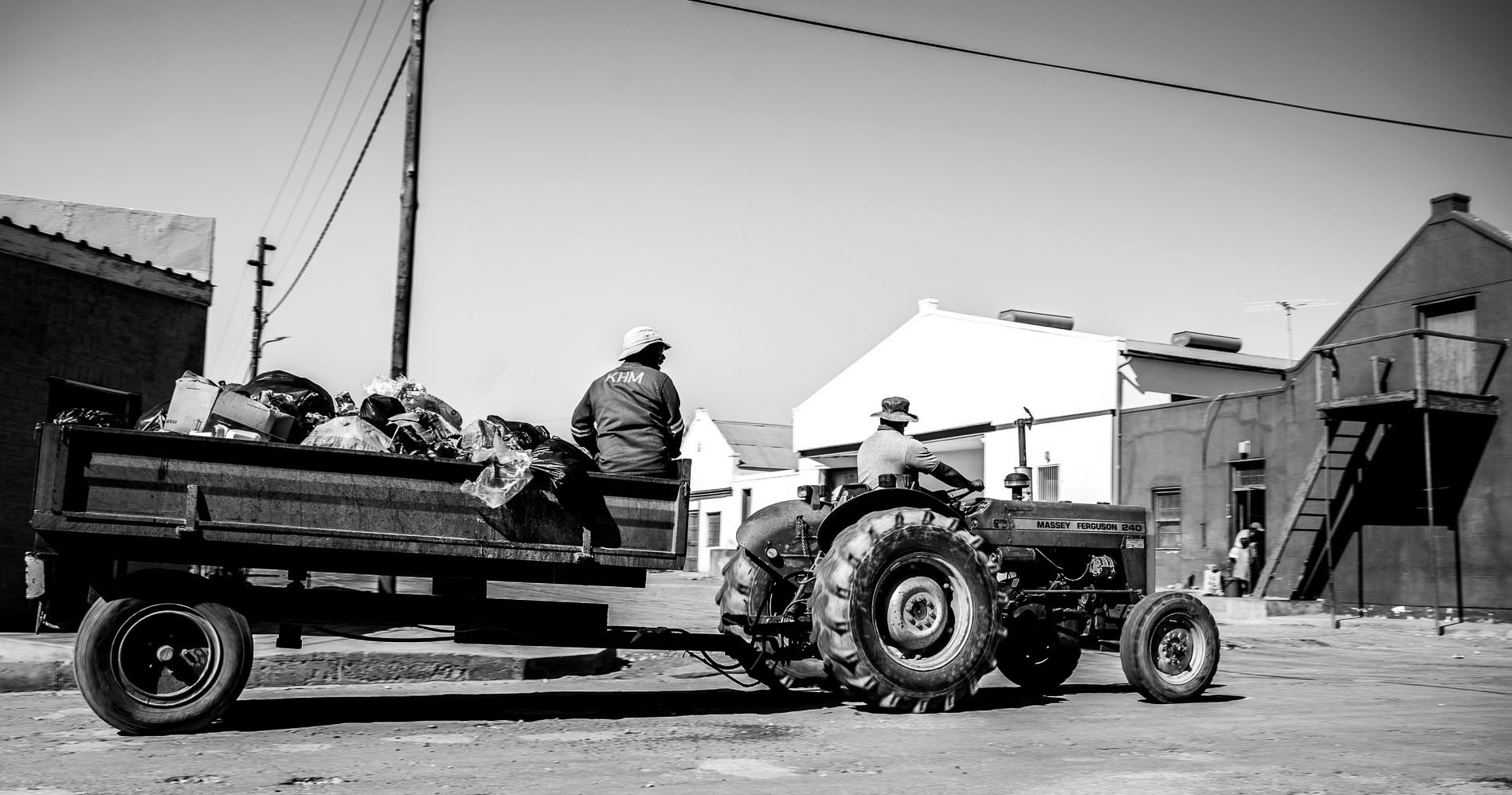
The wellbeing of a large part of the local farming community has been affected by this drought in various ways. Many permanent positions were lost, including jobs for farmworkers. For many, even casual work has dried up. (Photo: Newton Stanford)
Reportedly, only 35 of the 105 farms in the Williston area are still fully operational. In recent years, most struggling farmers reduced their farmworkers from three or four people to one or two, sometimes none at all. Permanent positions have all but vanished. For many, even casual work has dried up.
The drought conditions have uprooted many. People have drifted into town, families ending up in cramped living quarters in Amandelboom. Anecdotal evidence suggests a slow exodus of farmworkers from the Karoo during lean years, resultant from the many droughts over the past two to three decades, even before the recent multi-year drought.
But things in town aren’t necessarily rosier. Most town businesses are related to the local farming co-op: If the finances of its members (farmers) are in dire straits, the town’s business units and the local economy are also in trouble.
The wellbeing of a large part of the farming community has been affected by this drought in various ways.
“I have seen many, many people age before my eyes in the last few years,” Symington says. “It really broke many people to stand in queues, waiting for food parcels.”
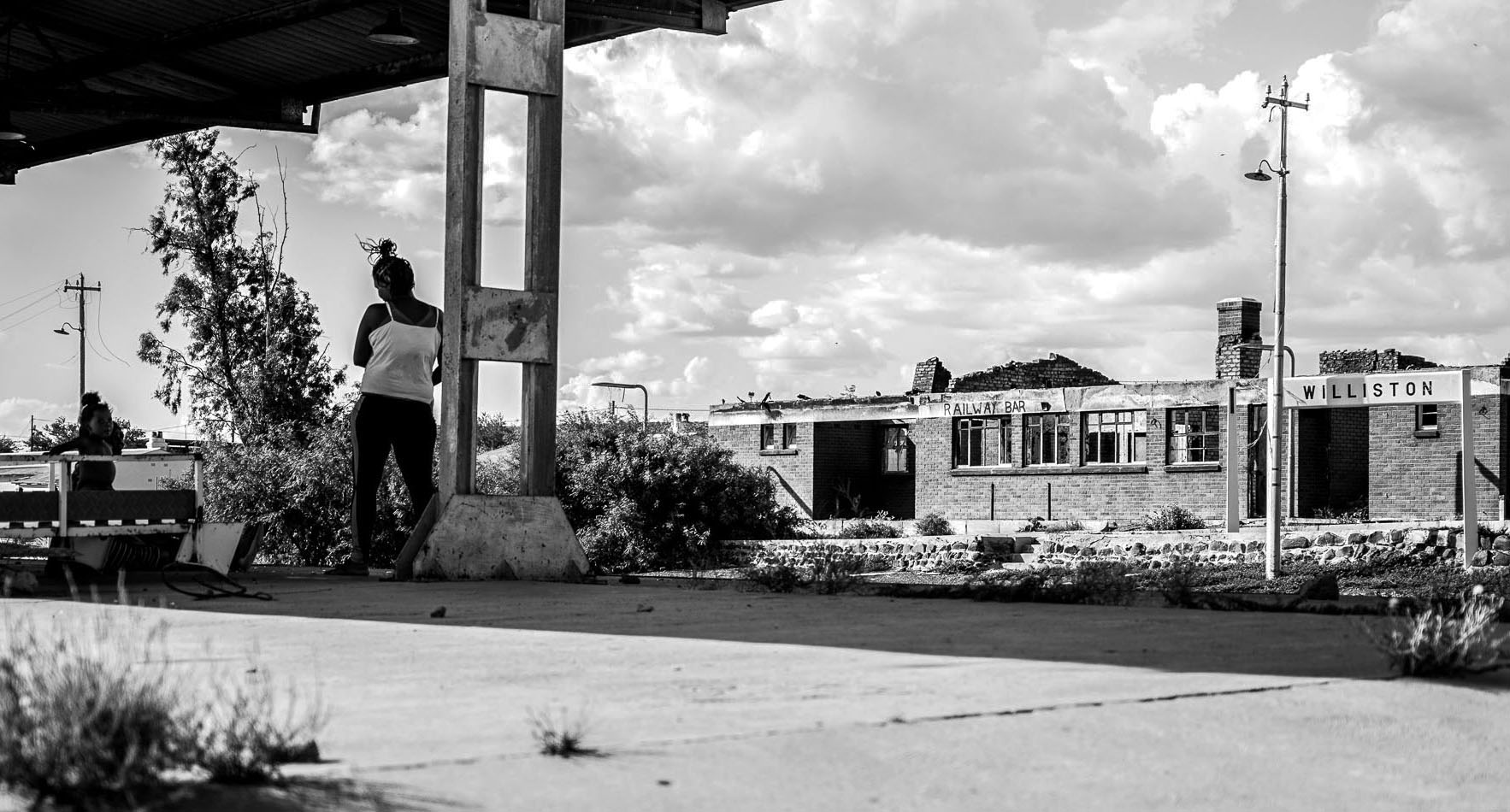
The derelict railway station building in Williston, Northern Cape, a gateway to seemingly nowhere. The tracks leading in and out of town are overgrown and unused. (Photo: Newton Stanford)
According to Netta van Zyl, head of the Williston High School, the drought’s impact on learners remains underreported. During the worst of the drought, many schoolgirls struggled with the burden of financial hardship and hunger as household incomes dried up.
“We had learners with no water at home and no money to buy it,” she says. “Many girls quietly asked to shower at the hostel before school, expressing shame about their personal hygiene.
“We also had learners who relied heavily on the school feeding scheme for their only meal of the day because their parents had no work. Many would often ask for a second helping, and we’d know they were going to take it home to a family member.”
A sign of things to come?
According to experts, drought has become an increasingly common disaster and major hazard in South Africa in terms of the number of people affected and losses for the economy.
The current multi-year drought can be read together with droughts in the region from before 1974. Hannes Gerber, the research manager at the Northern Cape Department of Agriculture, Environmental Affairs, Rural Development and Land Reform, says although rainfall figures for this area reveal similar and even more severe droughts before the 1990s, the recent droughts caused more hardship because of economic factors and the increased cost of living.
In the region of towns such as Williston and Calvinia, drought is often the result of natural variations. Importantly, though, these variations could in future be intensified by climate change.
All indications are that southern Africa is to become drier still, warming at about twice the global rate of temperature increase. Research shows that climate change, including resultant extreme weather events, can currently be detected in every region of the world, including the Northern Cape. This is according to Francois Engelbrecht, a distinguished climatology professor at the University of the Witwatersrand’s Global Change Institute.
“Earth is warming faster than previously thought, and the window to avoid catastrophic outcomes is closing,” he cautions. He says these and other findings should serve as “a serious wake-up call”.
Climate change has already increased the frequency of multi-year droughts in southern Africa and the risk will increase further as global warming intensifies.
Research has shown that increases in high-temperature extremes and decreases in cold spells are more substantial in the western and northern regions of the country. In the Northern Cape, mean maximum daily temperatures definitely increased between 1960 and 2000 but more so since. In the past 30 years, maximum temperatures have also risen significantly in the Upper Karoo.
The effects of this on people’s wellbeing, livelihoods and future prospects are part and parcel of the ripple effect of climate change, Engelbrecht points out.
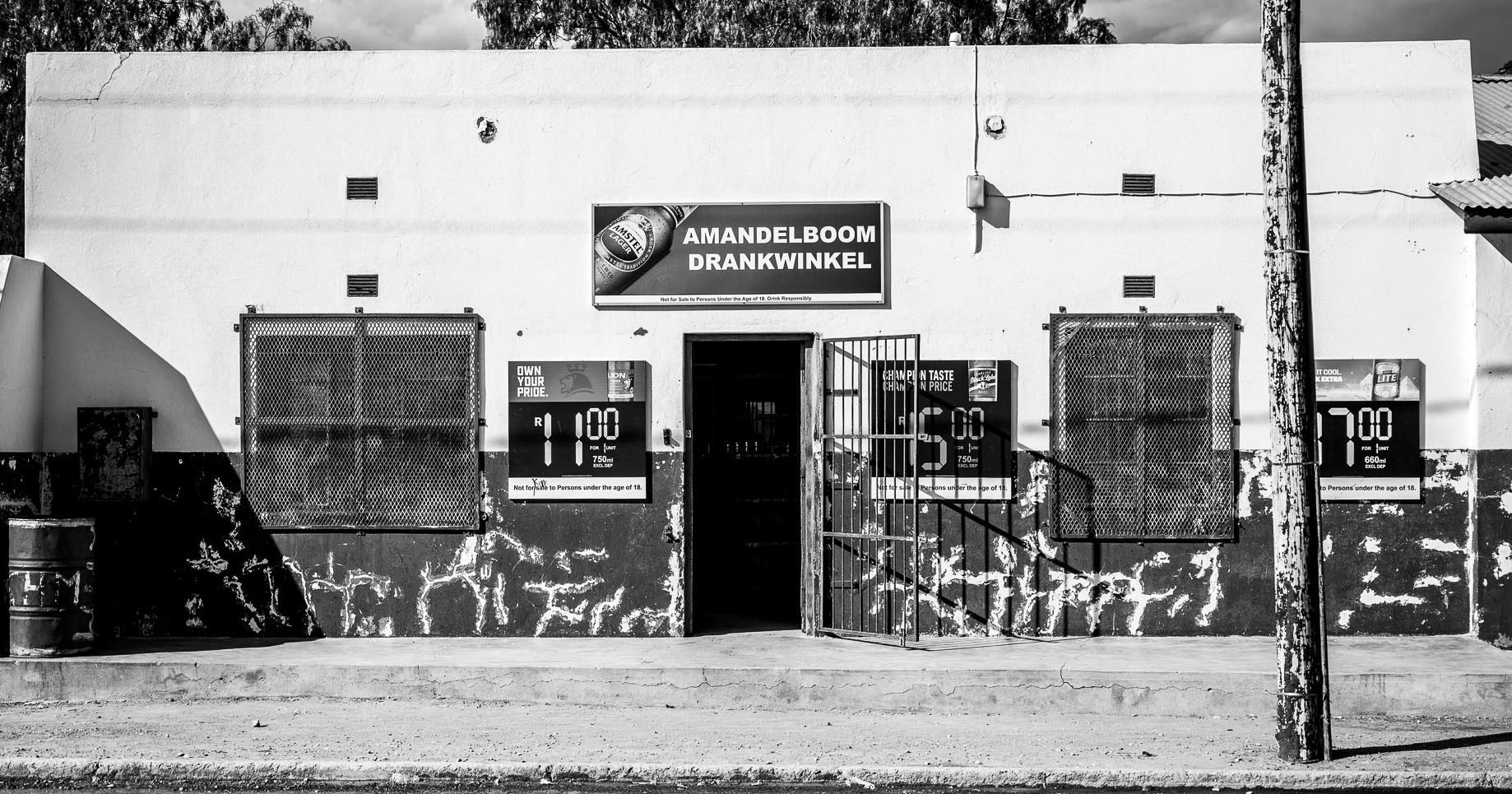
Alcohol sales have rocketed in town during the drought. Pictured here is one of the bottle stores located in the central part of town. (Photo: Newton Stanford)
Reduced production and loss of income, compounded by the drought’s impact on the economy, provide a clear indication of how people are likely to be challenged in years to come in the unfolding context of the climate crisis, even if a particular drought can’t be directly attributed to climate change.
“Complex predictions and modelling indicate that drought will be a major concern for many communities living in arid South Africa in the future due to climate change,” says Dr Helga van der Merwe, arid systems ecologist at the South African Environmental Observation Network’s Arid Land Node. She is assessing the impact of climate variability, land use, and land management on vegetation in arid areas. Many climate-related trends have been identified in the Karoo and elsewhere in South Africa’s arid zones, which researchers will now investigate further.
“We need more data sets, but we also need to increase the length of the data sets before we can get an idea of exactly what is changing over the long term,” says Van der Merwe.
Caught in a dry cycle
Dr Ilse Eigelaar-Meets, a sociologist from Stellenbosch University, says the socioeconomic effects of the drought have been devastating for many households.
Over the past few years, researchers involved in the Cosmopolitan Karoo research programme have investigated factors that affect households’ social and economic mobility in Williston and other Karoo towns.
Eigelaar-Meets is worried about the cumulative stressors of the drought, as well as the effects of prolonged drought on the resilience and wellbeing of Williston’s people.
“Unemployment is rising in town. There are very few jobs available for young people, even those who manage to finish school. This creates all kinds of new social ills in town.
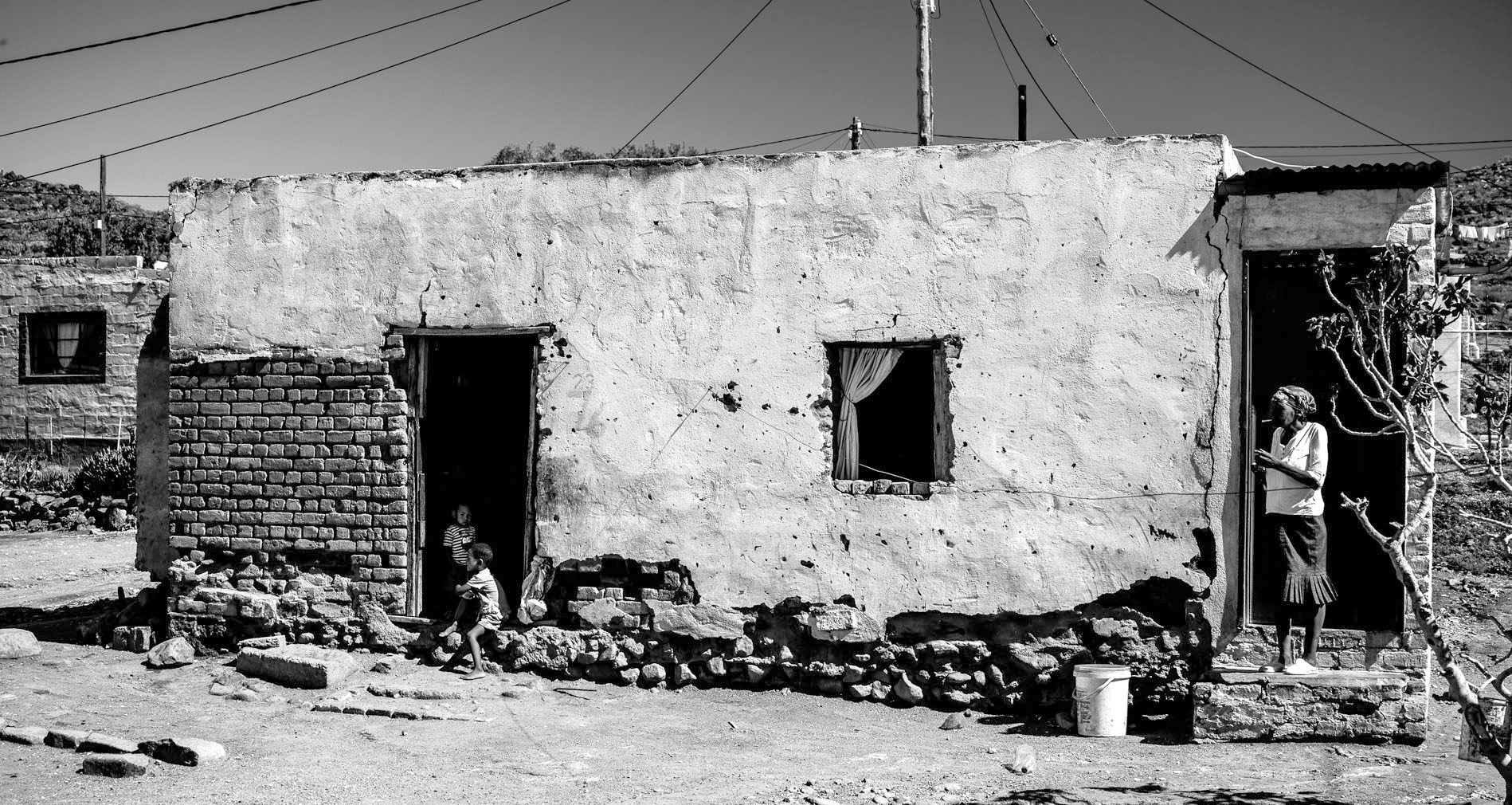
Many of the dwellings in Amandelboom have become almost derelict and are in desperate need of maintenance. In addition, most households living in this area are dependent on social grants for income. (Photo: Newton Stanford)
“If you don’t work on a farm, you either work at the local [agricultural] co-op, at Manna [a local restaurant], for the municipality, or at the abattoir. So those are basically your options,” she points out. “Many young people give up trying to find a job altogether.
“We also see, emerging in their narratives, great frustration and many dashed dreams,” she says. “Overall, many of the youth we interviewed expressed feelings of hopelessness.”
In town, food is available but often inaccessible. Rising food prices have worsened hunger in the area.
“Poverty is creating a trap of social immobility in Williston,” Eigelaar-Meets says. Research shows hunger, sustained by food insecurity, is a driver of poor mental health. Hidden hunger and poverty are lonely burdens to carry, she emphasises.
“We know that severe hunger in children is associated with internalising behaviour problems such as depression and anxiety. There is also emerging evidence that children are more likely to have a mental health problem if their parent is in psychological distress.”
The school dropout rate in town is high and teenage pregnancies seem to be rising.
“Having a child as a teenager has a negative effect on the mother’s chances of finishing school. And because such a teenager is less likely to go back to school, her earning potential goes down, and she is more likely to remain in or drop into poverty,” says Eigelaar-Meets.
Research also shows a connection between depression and poverty, the one often fuelling the other.
“These are some of the factors that we should consider. Unfortunately, many young people will be left vulnerable to future climate shocks and extreme events, with limited ability to adapt,” Eigelaar-Meets foresees.
Mental health in a warming, unequal world
It is extraordinarily difficult for most children and young people to adapt to the advancing climate shocks, including climate change-exacerbated disasters, water insecurity, and economic losses, says Dr Garret Barnwell, a clinical psychologist and community psychology practitioner. He recently wrote an expert opinion piece on the mental health effects of climate change in the South African context.
“Children bear the greatest burden of climate change,” he points out. “Not only are they more vulnerable than adults to extreme weather and its health effects, but their world is becoming a more dangerous place to live.”
Overlapping hazards ultimately make certain parts of the world increasingly precarious and risky places for children to grow up in — drastically reducing their future potential.
Scientists have a good understanding of the impacts of poverty, isolation, unemployment, food insecurity, and nonattendance at school on child and adolescent mental health and development. However, Barnwell says they are only now starting to understand the effects of the unfolding climate crisis on children and young people.
For many people, displacement due to weather-related disasters is already a reality. Climate change could also exacerbate other causes of displacement, including poverty and food insecurity.
Barnwell says that mental health burdens in South Africa are high and have often been neglected. This is certainly true of the rural Northern Cape.
People often confuse the meanings of terms such as “mental illness”, “mental health”, “mental disorder” and “mental wellbeing”.
“It is more helpful to think of someone as being on a continuum of (emotional) wellbeing,” says Professor Mark Tomlinson of the Institute for Life Course Health Research in SU’s Faculty of Medicine and Health Sciences.
“At the one end of the continuum is mental health, where young people feel content, experience joy, and ‘thrive’. Others may be coping with their everyday routines but also be experiencing times when they feel worried, anxious or distressed.
“On the other extreme end, we find very serious mental disorders, including schizophrenia and psychosis. So, everything else — including anxiety related to extreme weather events — is, for instance, situated somewhere between those two points.
“And it [wellbeing] is incredibly fluid.
“Sometimes a person experiences a bit of distress, or they just feel a bit down. That could, in certain conditions, turn into feelings of dread, prolonged anxiety, and so on.
“What is not commonly known is that even mental illness can be experienced on a continuum, with the impact ranging from a mild, time-limited illness to a longstanding, severely disabling condition,” Tomlinson explains.
If these challenges to wellbeing are addressed, young people can thrive. But suppose they continue to struggle or experience a sudden negative life change. This may push them into a state of crisis where they begin to feel severely anxious or depressed and can no longer cope with daily tasks. This may culminate in mental disorders or in a clinically significant disturbance in cognition, emotion regulation or behaviour.
“Yes, there is a mental health treatment gap in South Africa, and even more so in deep rural areas. But most of the time, only people on one end of the wellbeing continuum will need professional assistance.
“People moving towards the other side of that continuum don’t need professional help. They need support, whether this is in the form of cash, help from their family or access to safe places to play.”
Tomlinson considers the need to supply such support systems critically important. “There will never be enough psychologists or social workers around, not even in high-income countries. So, we need to start thinking differently about this.
“We know that unemployment, economic factors, and poverty are implicated in mental health problems. So, the poverty that results from climate-related and extreme weather events may result in issues around mental health in the long run.
“The youth are exposed to multiple socioeconomic stressors, including high levels of unemployment, foetal alcohol syndrome, and school dropout, as well as adolescent pregnancy, intergenerational violence, etc. Each of these stressors contributes to poor wellbeing, which in turn can be linked to poorer mental health outcomes or mental illness down the line as you move across the continuum.
“There is a hierarchy of risk involved,” Tomlinson adds.
Until now, local climate-related adaptation responses have paid very little attention to the effects of climate change on the mental health and wellbeing of young people. “This needs to change for the sake of our children,” he believes.
Towards new beginnings
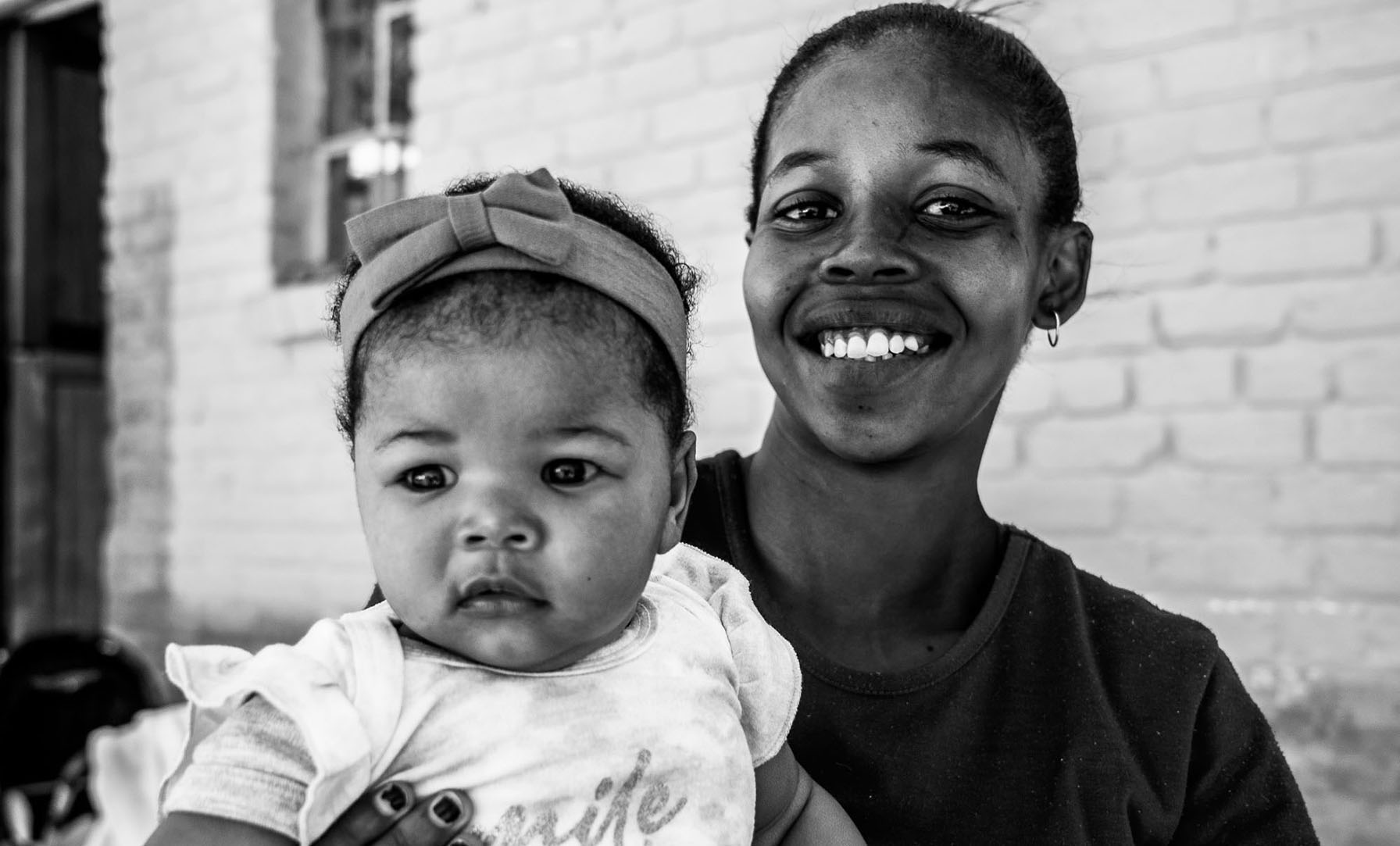
Marcia Wilsket (18) relaxes at home with her baby Me-Jade on her lap. She is going back to school this year after staying at home for most of last year during her pregnancy. (Photo: Newton Stanford)
This brings us back to Marcia Wilsket. She needs to drop the baby off at her boyfriend’s mother’s house near the cemetery. She will be babysitting Me-Jade during school hours this term. Edgar Klaaste (18) is the father, a matric learner at the same school Wilsket attends.
She covers the infant’s head with a towel while she speaks. “I really want to finish school. I want to get a real job, perhaps somewhere outside of town. My baby deserves a better life.”
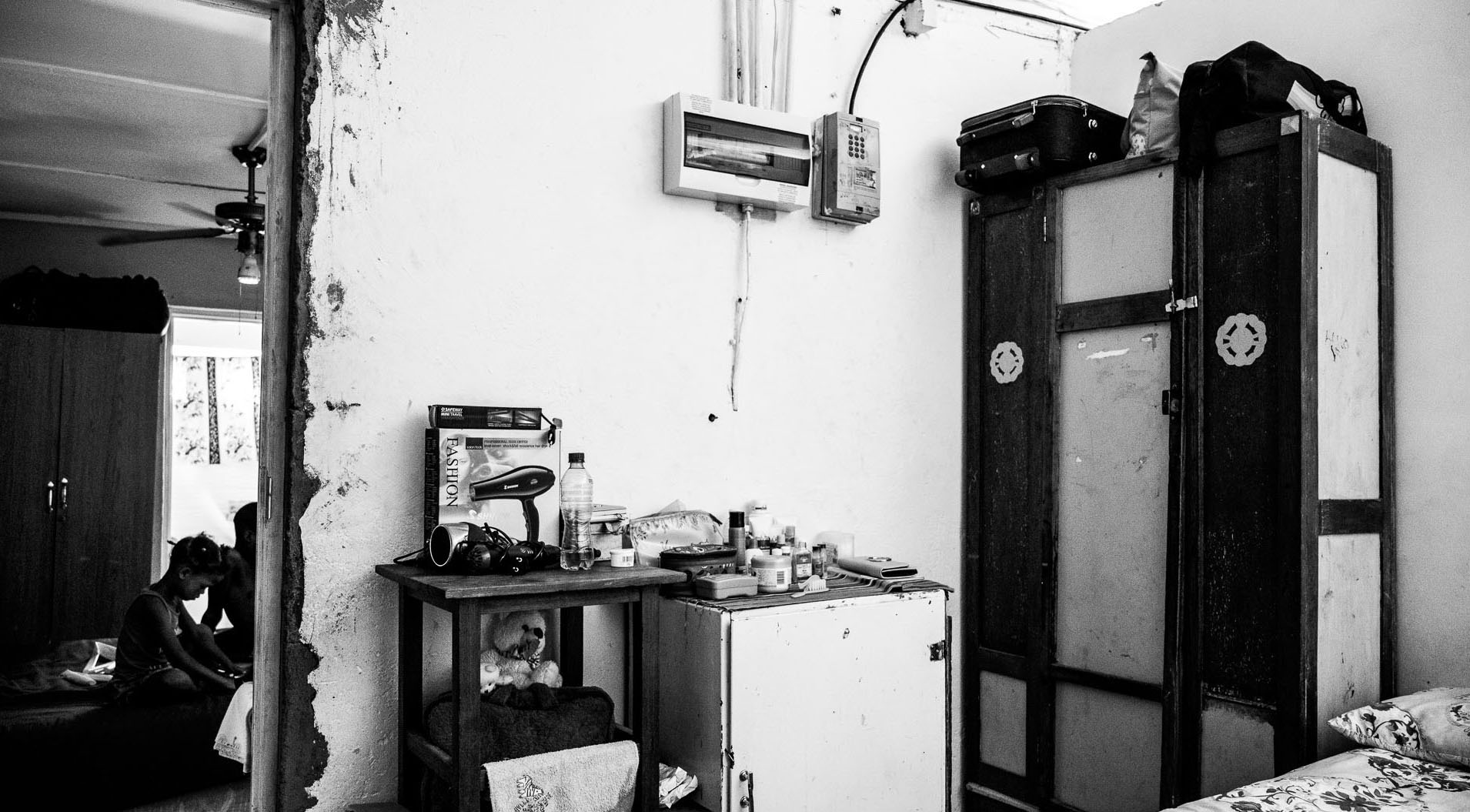
Medicine, personal hygiene items and baby products are organised in the corner of the room where Marcia Wilsket and her baby sleep. The five children share the wardrobe in the bedroom corner. Each one has a shelf to store all their earthly belongings. (Photo: Newton Stanford)
She also dreams of returning to the netball court later this year. “Playing netball is my favourite thing in the world.” She is a talented player, having been chosen for the provincial under-16 team before her pregnancy. As her voice fills with emotion, she says, “Who could have thought that someone like me could ever do it?
“Perhaps I will have time for playing again this year,” says the teenager, who feels responsible for taking care of her own child and also her siblings and the two foster children.
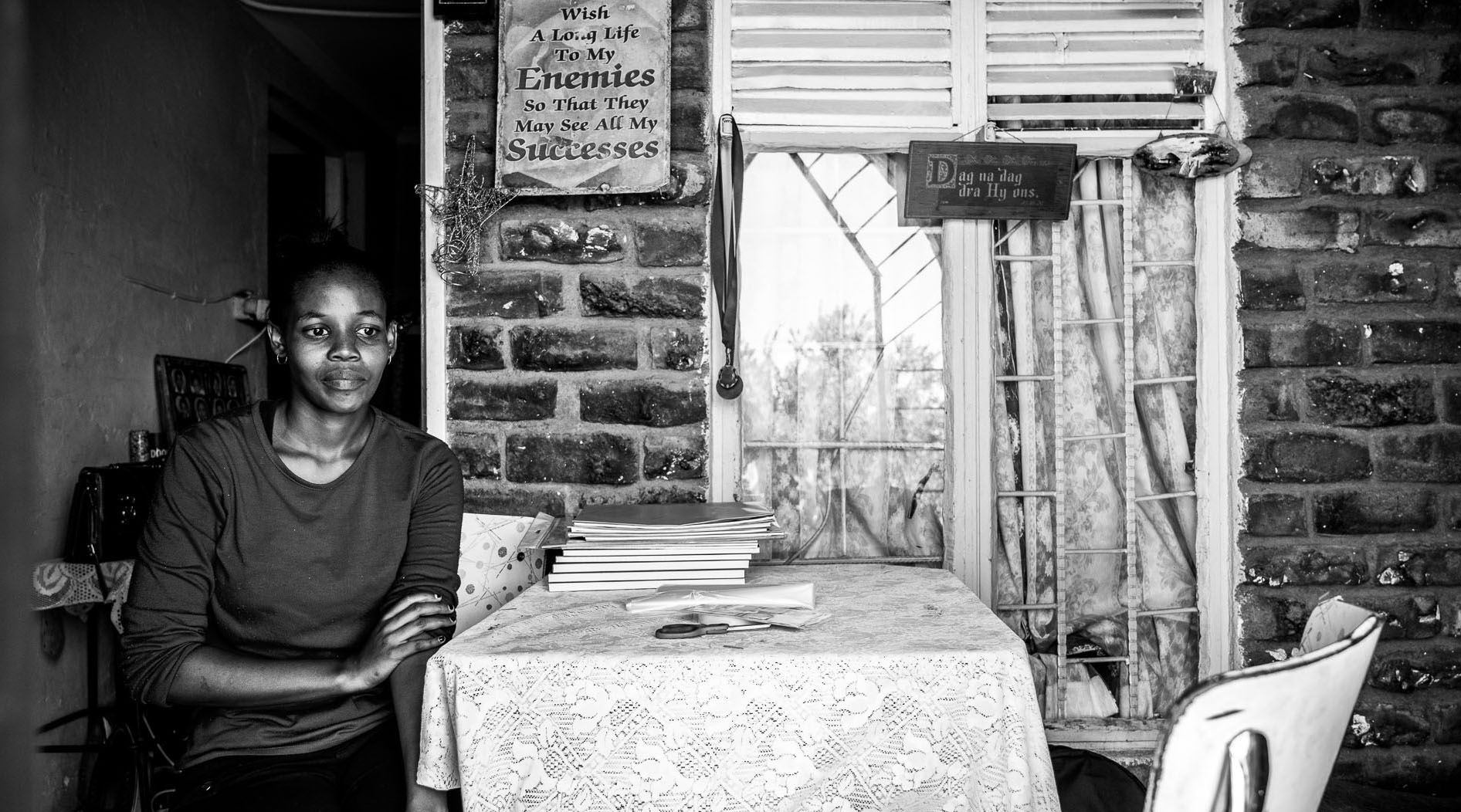
Marcia Wilsket’s study area is at the front of their house. She says this is often the quietest place in their busy household to try to concentrate. (Photo: Newton Stanford)
She fiddles with Me-Jade’s pink headband. “I love the baby very, very much. But I worry about her future too.”
Me-Jade is restless. “We need to get her out of the sun.” Wilsket sounds concerned as she nimbly steps over some building rubble, past decaying rubbish and the sun-baked carcass of a small bird.
“I still need to cover everyone’s school books before tomorrow. It’s the start of a new year and I need to be ready.” DM/MC/OBP
This reporting was supported by the International Women’s Media Foundation’s Gender Justice Reporting Initiative.


















 Become an Insider
Become an Insider
Comments - Please login in order to comment.